A New Strategy for EMP Protection of Critical Civilian Infrastructure
The problem of the destructive effects of high-altitude electromagnetic pulse (EMP) on electronic and electrical equipment has been well-known for more than 50 years. All military equipment and critical equipment of special governmental services are reliably protected from such influences. There are many companies on the market that manufacture numerous EMP protection means that meet the requirements of military standards.
COMMENTARY
It would seem that in such a situation, critical civilian infrastructure facilities, such as electrical power systems, water supply systems, communications, large medical centers, banks, and the like, should also be protected against EMP. But it turns out that this is not the case. Nowhere in the world are critical civilian infrastructure protected from such impacts.
Why? The main reason is an attempt to use well-known military strategies, methods, and protection means for protecting civilian infrastructure. This article proposes new protection strategies and methods for the civilian sector.
History Underscores the Threat
The ability of a powerful EMP to destroy all electronics has been known to nuclear physicists since the first nuclear explosion was performed in 1945 on the Alamogordo range, New Mexico (project “Trinity”). Upon the explosion, all apparatus that was meant to monitor the explosion parameters became inoperative. Upon all further test explosions performed in all countries, EMP was registered precisely, and was followed with the analysis and study of the parameters.
An additional experimental high-altitude nuclear explosion named “K-3” was performed in the Soviet Union (at Kazakhstan, 180 kilometers [km] west of Dzhezkazgan town) on Oct. 22, 1962, (300 kiloton [kt] yield at altitude 290 km). According to data, published by V. M. Loborev (Figure 1), the EMP impact caused failures in the operation of air defense radar located about 1,000 km away. An underground power cable with a length of 1,000 km, passing at a depth of about 1 meter (m) and connecting towns Tselinograd and Alma-Ata, was put out of action. Breakdowns of ceramic insulators resulting in short-circuits were observed on 35-kV electric overhead power lines, in some areas. The insulators were so damaged that the wires fell to the ground.
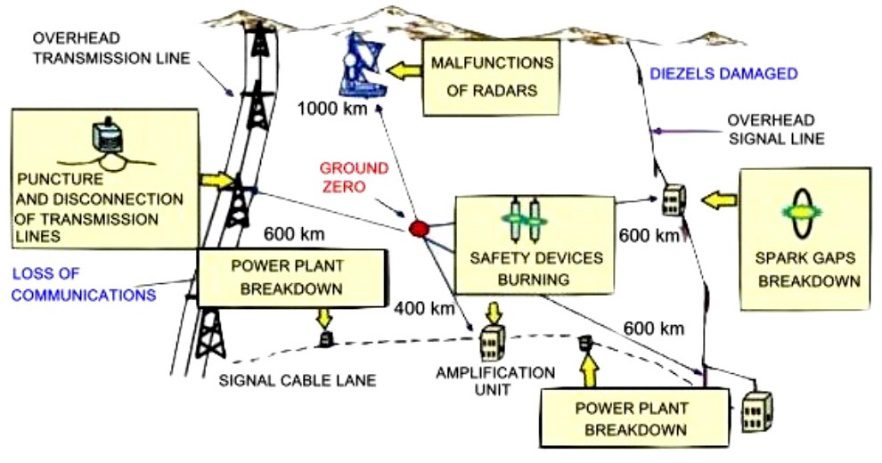
EMP caused fires due to short-circuit in electric appliances. A power generator that was connected to an underground power cable was knocked out of service at one of the power plants in Karaganda town. Relay protection (even old electromechanical type, rather than modern EMP-sensitive microprocessor-based systems) was triggered, resulting in the power generator at another power plant being switched off.
A slow geomagnetic component of EMP induced a short current pulse with an amplitude of several thousand amps, as well as a long (more than 20 second) current pulse rated 4 amps. This led to diesel generator damage and triggering of protection devices mounted over a 570-km above-ground telephone line. There is also information about some breakages of electronic equipment that occurred at Baikonur Cosmodrome, a spaceport operated by Russia within Kazakhstan.
Impacts Could Be Far Greater Today
At the same time, it should be noted that the level of electronics in the USSR in 1962 was incomparably lower than in the West today. That is, the breadth of application of electronics, its sensitivity (susceptibility to EMP) were incommensurate with today. If such a test were carried out today, it would lead to the complete collapse of a large part of the country.
Beginning in the 1970s (50 years ago), the subject has been unclassified. At that time, dozens of Western scientific and technical reports, prepared by numerous military and civilian organizations (working at the military request), were devoted to different aspects of EMP impact on electrical equipment and electronics.
Since then, EMP has been officially recognized as one of the damaging effects of nuclear weapons, along with the detonation wave, the temperature, the light, and the radioactive emission. At the same time, the first recommendations for the protection of electronic and electrical equipment from EMP appeared, which, of course, were primarily intended for military equipment.
Civilian Infrastructure Neglected
Well, what about civilian critical infrastructure protection? Today, at least a hundred organizations around the world are dealing with this problem (there are more than 50 of them in the U.S. alone). Dozens of detailed reports have been published on this topic, which are freely available on the internet, as well as hundreds of articles and books. Dozens of standards (civilian and military) describe how to protect critical infrastructure equipment against EMP.
But if everything is so good, then why is critical civilian infrastructure still unprotected everywhere in the world? Why, after 50 years of careful study of the problem and hundreds of recommendations, is the Department of Homeland Security asking Congress for tens of millions of dollars (Figure 2) to “improve understanding”?

And this is just one organization out of many dozens (more than 50) “studying” this problem in the U.S. alone. One can only imagine how much money from the budget is “sown” under the guise of this problem.
Existing Opinions
To date, there are four opposing concepts on the problem of protecting the civil critical infrastructure, which are reflected in statements by apologists of at least three of these concepts.
Concept A. Everything has been known for a long time. There are no technological problems.
“The problem is not the technology. We know how to protect against it. It’s not the money, it doesn’t cost that much. The problem is the politics. It always seems to be the politics that gets in the way,” Dr. Peter Vincent Pry, said as executive director of the Task Force on National and Homeland Security.
“The U.S. military already has EMP protection approaches that are practical, affordable, tested, and well-understood that can be translated directly to electric power grid control facilities and supervisory control and data acquisition electronics and networks,” said Dr. George H. Baker, professor emeritus at James Madison University, and director emeritus with the Foundation for Resilient Societies.
Concept B. We have neither the knowledge nor the resources to protect infrastructures.
“Much of the available information is not specifically applied to electric utilities, making it very difficult for utilities and regulators to understand effective options for protecting energy infrastructure,” Robin Manning, said as vice president of Transmission and Distribution Infrastructure for the Power Delivery and Utilization research sector at the Electric Power Research Institute (EPRI).
“Managing that kind of threat right now—no one really has the resources to do that,” Richard Mroz, said as president of the New Jersey Board of Public Utilities.
Concept C. There are no solutions to the problem, so you need to leave everything as it is.
“I don’t mean to be so flippant, but there really aren’t any solutions to this, so I would just leave it at that,” said General M.V. Hayden, ex-director of the National Security Agency (NSA) and ex-director of the Central Intelligence Agency (CIA).
Concept D. Effective defenses against EMP are a national anti‐missile defense system only into which more budgetary funds should be invested. Representatives of the military‐industrial complex (MIC) frequently stand behind this view, and the concept seems to be quite effective. After all, the military and representatives of the MIC should know this problem better than anyone else. But, let’s take a closer look at this concept.
First, this concept, which was adopted by representatives of the MIC, would be quite understandable if the cost of developing and producing an effective multi-layer anti-missile shield that would protect the entire country would be lower than the cost of defensive measures to protect critical elements of the country’s infrastructure and its systems from attack. But this is not so—quite the opposite.
Secondly, it appears that it is not that simple and that missile systems have been in existence for some time that an anti‐missile system is not capable of defending against. That is to say, it is not possible to protect the national infrastructure from EMP attacks. What sort of systems are these? They are theatre ballistic missile (TBM) systems, which can be equipped with a nuclear warhead (Figure 3).
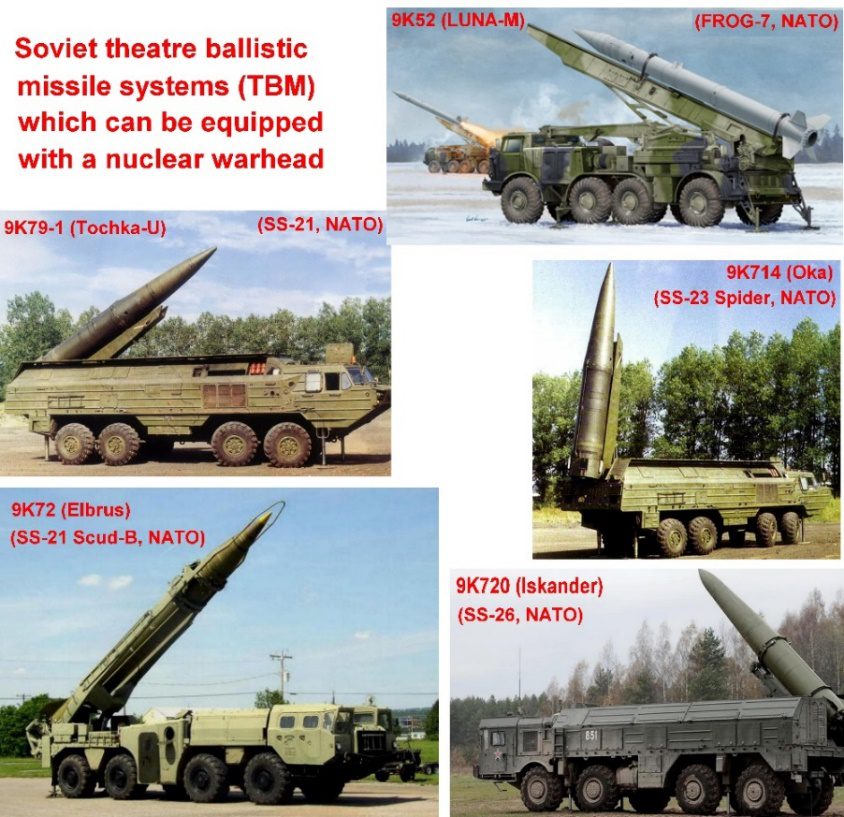
The danger of such systems is that they can be as close as possible to the borders of any country. With a small area of a country (for example, such as Israel), the flight time of such a missile can be so small that the missile defense system will not be able to effectively counteract.
Especially dangerous are modern container-type missile systems, which are made in the form of an ordinary container with missiles hidden inside. For example, the Israeli LORA system (Long-Range Artillery Weapon System) is such a system. The launcher of the system differs very little from a conventional shipping container (Figure 4). Today, there are hundreds of millions of sea containers in circulation across the world. Nobody could know which of them are genuine and which might be filled with missiles.
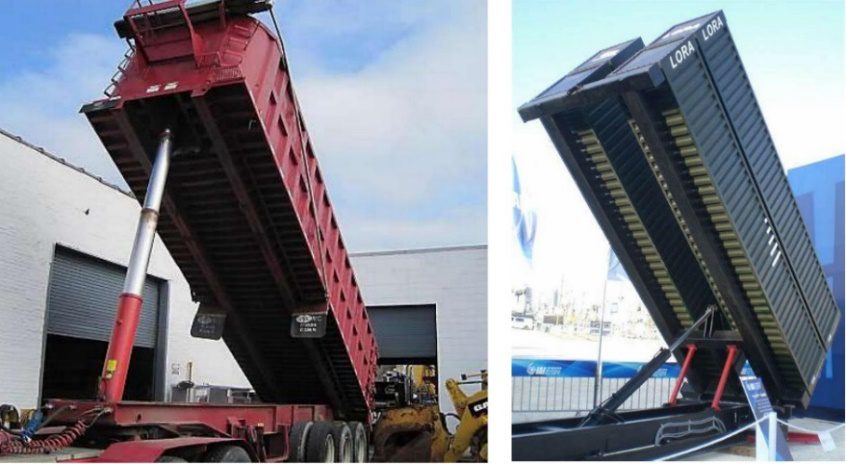
Developed by Israel Aerospace Industries’ MALAM division, LORA is a sea-to-ground and ground-to-ground system, which comprises a long-range ballistic missile, a unique launcher, a command-and-control system, and a ground/marine support system. The LORA missile has a length of 5.2 m, a diameter of 625 mm, and weight of 1,600 kg. It can engage targets at a short range of 90 km and at long ranges up to 430 km.
The high-explosive (HE) warhead (up to 600 kg) can be equipped with a nuclear charge. This rocket is capable of going up to an altitude of 45 km and above, that is, to an altitude optimal for the production of an EMP. No missile defense system is capable of neutralizing a missile that unexpectedly launches vertically from one of the hundreds of containers standing in the cargo port of a container ship (Figure 5).
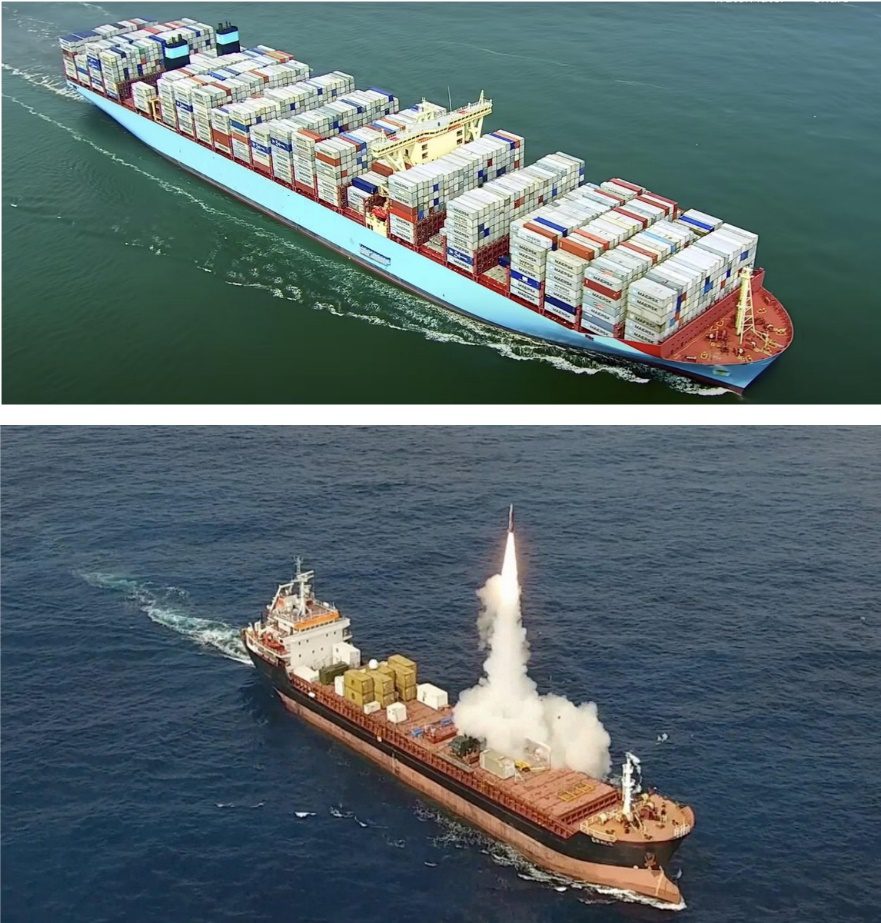
The LORA missile system is not entirely unique. Similar systems are also being developed and manufactured by other countries. That is the actual situation. It is such that the Army is not in a position to provide a sufficiently reliable defense of the civilian infrastructure facilities and population centers from EMP, and as such, it is the electrical engineering specialists themselves that need to be concerned with this defense ahead of time. The lack of clear, understandable, technical-effective, and cost-effective solutions to the problem of protecting civilian critical infrastructure, suitable for practical application (and not for scientific reports only) for more than 50 years, indicates the existence of a very serious problem.
The Ultimate Problem
Today, indeed, there is all the data on how critical infrastructure can be protected. Therefore, no one does anything in practice to develop new protection means specially for civilian infrastructure. In essence, if everything has long been known and the market is full of all kinds of protective equipment (EMP filters, shelters, etc.), why spend resources working on new solutions? But this does not prevent the situation that for 50 years not a single substation in the world has been protected as it should be. (Two substations in the U.S., partially protected do not count.)
Well, does a problem exist or not, that is the question? In the previous section, the existence of a serious problem was outlined. Yet, in this section, it’s been pointed out that everything necessary to solve the problem has been known for a long time and the market is full of protective equipment. It seems the situation is only more confusing and completely incomprehensible.
Alas, it is precisely this sort of confusion that exists in the protection of civilian infrastructure. After all, it is not for nothing that one of the leading experts in this field, Dr. George H. Baker, told lawmakers in Congress, “The current state of EMP protection is random, disoriented, and uncoordinated.” But what is the reason for all this confusion and lack of solution to the problem for more than 50 years?
The main and only problem is the attempts to use military technology to protect civilian critical infrastructure for all these 50 years. The well-known concepts of protection of military equipment and the means of protection against EMP available on the market, made according to military standards, are not suitable for the protection of civilian infrastructure.
The Way Out of This Paradoxical Situation
There can be only one way out of this situation: the development of a new protection strategy and new protective equipment specifically designed for civilian infrastructure. But for this, it is necessary to know well the structure and features of civilian infrastructure, including control cabinets with electronic equipment, relay protection, power transformers, DC power auxiliary supply systems, grounding systems, Ethernet networks, and much more. Therefore, it is not easy to develop protection for such a diverse range of equipment. In addition, in order to understand what means of protection are needed for civilian infrastructure, it is necessary to understand why the known military means of protection are not suitable.
Unfortunately, it is not possible to describe within the framework of this article the problems that arise when trying to apply military technology to civilian equipment without resorting to very specific technical details and features of electronic and electrical equipment. But all these technical details are described in the book “EMP Protection of Civilian Critical Infrastructure: Opinions, Problems, Strategy, Solutions,” which is intended for technical specialists. It is important to reiterate here that this is not only a question of new means of protection, but also of a new strategy for the protection of civilian infrastructure against EMP.
A Strategy for Protection
From the foregoing, we can conclude that suitable strategies and technologies intended for the civilian sector do not exist now. Therefore, a new absolute different strategy and means are required for the protection of the civilian infrastructure.
The main principles of this strategy (reviewed in detail and substantiated in the book “EMP Protection of Civilian Critical Infrastructure: Opinions, Problems, Strategy, Solutions,” with all technical and scientific evidence) are:
- It is fundamentally impossible to formulate clear technical requirements for EMP protection of equipment that would be universal for all types of civilian facilities and equipment.
- It is impossible to ensure absolute protection for every piece of electronic equipment employed at civilian critical facilities.
- Any available level of protection that can attenuate (at least partially) EMP impact on electronic and electrical equipment is useful for civilian critical infrastructure.
- The cost of protection devices budgeted during the design stage (in case of new equipment and facilities) will be much lower compared to upgrading the existing equipment.
- Due to technical and economic reasons, protection should only be provided to the most important (critical) types of electronic equipment installed at critical facilities of the power industry, rather than to any and all types of equipment employed by the power industry.
- Critical types may include equipment that is directly involved in electrical energy generation and transmission, as well as main types of relay protection, control and automation systems, and AC and DC power supply systems.
- Consequently, measuring systems, communication (but not telecommunications used by digital relay protection devices), remote control, and remote signaling systems do not belong to equipment without which temporary generation and distribution of electrical energy will be hampered in emergency situations.
- EMP protection of equipment is multi-layered:
- The first (top) layer includes protected buildings and structures.
- The second layer includes protected rooms (halls) where equipment is installed.
- The third layer includes protected cabinets with electronic equipment.
- The fourth layer includes protection input and output terminals of the equipment itself placed into control cabinets.
- Some additional “layers” of protection may include means for attenuation of electromagnetic interferences penetrating into the equipment through the input and output cables (grounding, control, and power).
- However, the use of all these “layers” in any situation is not feasible. In some cases, it is feasible to use just some of the “layers” in various combinations.
- Instead of protecting specific types of employed electronic equipment, it is sometimes feasible to use back-up equipment of the same type stored in a metal container directly at the facility being protected.
- Existing EMP-simulating test benches provide insufficient information at immunity testing of the power system’s electronic equipment, and thus, testing such equipment (such as each cabinet with electronic equipment) on such test benches is not feasible.
In other words, the general strategy should be based on maximum use of the maximum amount of known nonmilitary protection means (selected based on the above-mentioned strategy), with restrictions to be determined by technical and economic capabilities of a specific infrastructure object, only because any level of protection, which can attenuate (at least partially) the EMP impact on electronic and electric equipment, is useful.
A Means of Protection and Key Findings
In accordance with the specific strategy for the protection of civilian infrastructure previously proposed, a specific means of protection has been developed, which has been installed in trial situations and has already been tested in several electrical substations during a two- to three-year period (Figure 6).
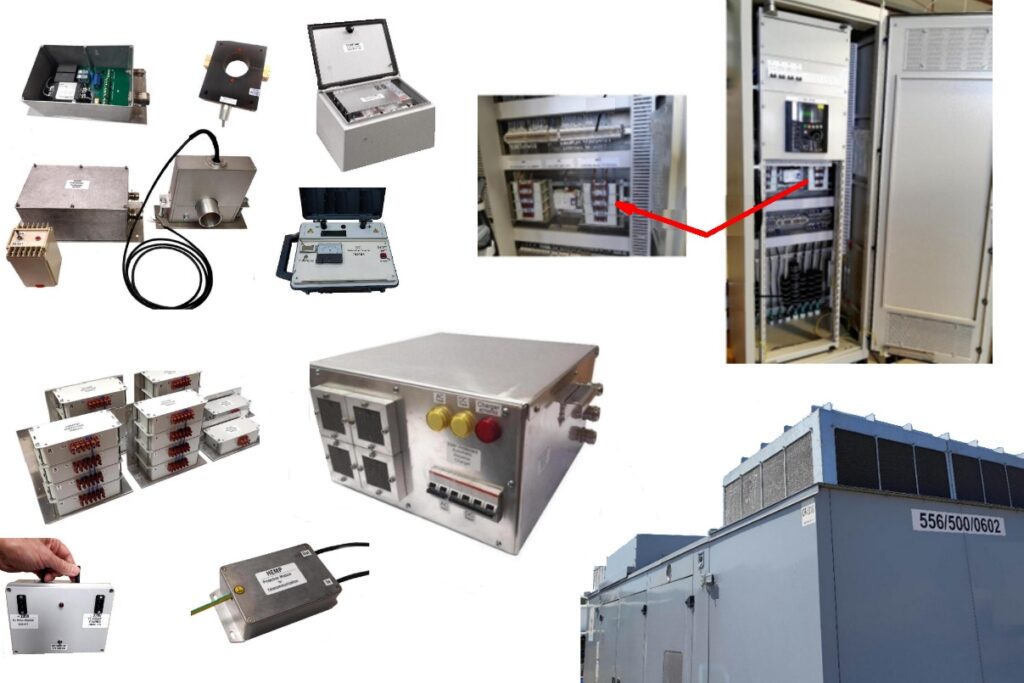
As previously noted, the situation is such that the Army is not in a position to provide a sufficiently reliable defense of the civilian infrastructure facilities and population centers from EMP, and as such, it is the electrical engineering specialists themselves that need to be concerned with this defense ahead of time. The EMP parameters affecting civilian infrastructure equipment depend on so many factors that they should be considered as uncertain.
The difference in the constructions, properties, and characteristics of various types of civilian equipment used in critical infrastructure facilities, their different location inside the buildings, the differences in the buildings themselves, and the presence of long cables connecting different types of equipment make their levels of resilience to EMP (and therefore the required levels of their protection) completely uncertain. The real level of EMP protection and the real level of resilience will be determined by the technical and economic capabilities allocated for a particular infrastructure.
Based on research described in the book “EMP Protection of Civilian Critical Infrastructure: Opinions, Problems, Strategy, Solutions,” it follows that any level of protection is desirable and any level of resilience increases the resistance of critical infrastructure to EMP. Naturally, with this approach, some of the equipment may be damaged when exposed to EMP, but most of the equipment will remain in good condition and will be able to continue to function. The more protective means is installed on a particular infrastructure object, the higher its degree of protection will be.
This approach to the problem differs significantly from the requirements for military equipment. Military standards should not be used to determine the requirements for the level of protection of civilian infrastructure equipment. The numerous EMP protection means available on the market, made according to military standards, are not suitable for use in civilian equipment. For civilian equipment, other EMP protection means should be used, such as those described in this article.
For civilian infrastructure, it is necessary to use a completely different strategy and different principles of protection than for military equipment. Such a strategy and such methods of protection are described in this article. The most common types of test benches—EMP simulators (guided-wave type) designed for testing military equipment according to military standards, are not suitable for testing civilian equipment. Therefore (and on the basis of research noted), it can be concluded that there is no point in such tests and no significant conclusions can be drawn from the results of such tests.
The transition to fiber optical communication lines for the transmission of telecommunication commands between cabinets with electronic equipment is not a panacea and, in some cases, only exacerbates the situation. To the frequently asked question: “Is it possible to consider an infrastructure object completely protected from EMP if the recommendations described above are followed?” the answer is no. But it can be assumed that this object will be much more resistant to EMP, and the probability of its damage will be much lower.
Conclusion
No single person, even one with many years of experience in the field of EMP protection of civilian infrastructure, is physically able to provide protection for an entire energy system, or a water supply company, communications system, large medical centers, banks, etc. The country needs a production center engaged in the development and production (and not simply researching, consulting, and studying the problem) of protective means especially designed for civilian infrastructure. It can be a small manufacturing company or even a technical laboratory that develops protective equipment for civilian infrastructure, produces technical documentation, manufactures prototypes, tests them, and orders their mass production at large manufacturing companies. Five to 10 engineers and technicians under the guidance of an experienced specialist could finally solve a 50-year-old problem and ensure the protection of the country’s infrastructure from nuclear EMP.
As a member of the Missouri House of Representatives and chairman of the state’s Special Committee on Government Accountability, David Gregory said, “[We] should not wait for the federal government to take action. We need to take action now to protect our portion of the grid.”
R. James Woolsey, former director of the Central Intelligence Agency (CIA), said, “The time for research is running out; we have the data we need. It’s time for bold action.”
—Vladimir Gurevich, PhD is CEO of Industrial EMP Solutions. To learn more, and for a link to purchase Dr. Gurevich’s book on EMP protection strategies, see the flyer “About Unsolved 50-Year-Old Problem: Who Is to Blame and What Needs to Be Done?“